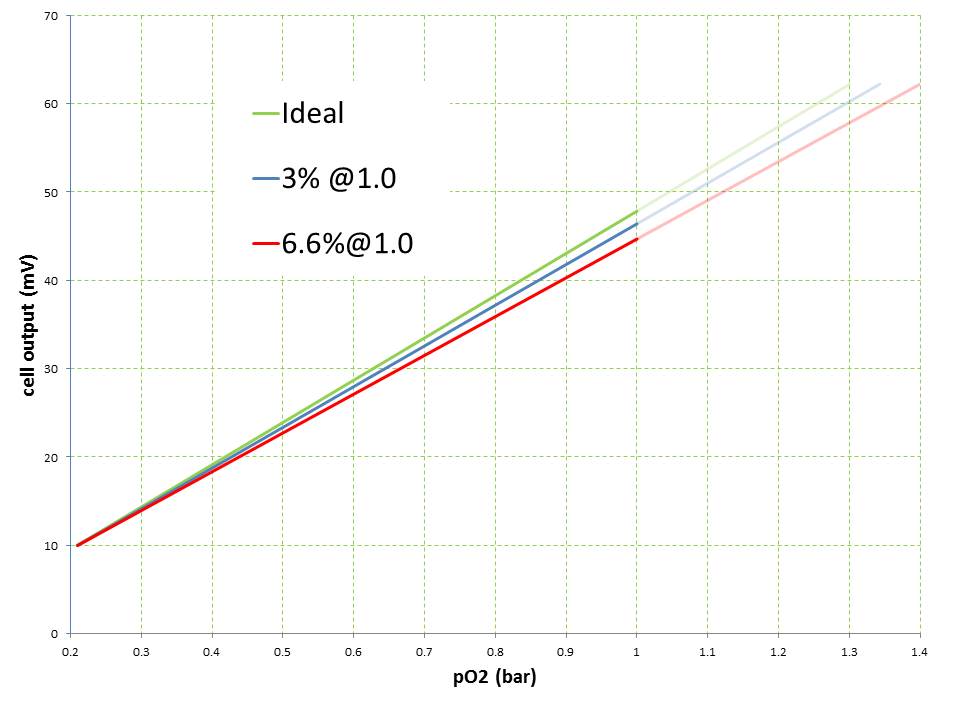Pandora's Box
Registered
rjack321, I’m still not getting this…
I’m OK with this part:
But this part is eluding me:
If, say, 0.209=10mV the ideal at 1 would be 47.847mV. A 3% deviation (low) at this point would be 46.412mV. Extrapolating then; at 1.3 the ideal mV would be 62.2 and the ‘fading’ cell would be 60.2. This is still <3.5%. The difference between 1.3 and 1.4 is 7.7%, which is why I asked if your 3% drift at 100% cal was meant to be 3mV (which would give 58.1mV at 1.3 against a target ideal of 62.2, and produce the 0.1 difference on pO2). Would you not need a deviation nearer 7% at 100% cal to give 7.7% at 1.3 (and the false 1.4 readout)?
All this is assuming the cells read same mV at 0.209 (1ata).
P.S. your graph shows the fading cells as reading higher mV than the ‘ideal’ line for the same pO2. I would expect a fading cell to be on the opposite side of the ideal line (above it on your graph) and read a lower mV for same pO2. Are the axes mislabelled (mV should be the ordinate)?
I’m OK with this part:
(assuming both lines are perfectly straight (but not parallel))Imagine a cell's mV is 3% less than ideal at a 1ata, ppO2 = 1.0 during calibration.
Go up from your 100% calibration point to a ppO2 of 1.3 and that 3% is magnified. The distance between red and green is getting bigger the further away from the 100% calibration point you get.
But this part is eluding me:
A deviation of more than 3% between ideal and expected for this kind cell in 100% O2 at calibration will mean that you will get 1.3 on your handset but the true O2 is at ppO2 of 1.4
If, say, 0.209=10mV the ideal at 1 would be 47.847mV. A 3% deviation (low) at this point would be 46.412mV. Extrapolating then; at 1.3 the ideal mV would be 62.2 and the ‘fading’ cell would be 60.2. This is still <3.5%. The difference between 1.3 and 1.4 is 7.7%, which is why I asked if your 3% drift at 100% cal was meant to be 3mV (which would give 58.1mV at 1.3 against a target ideal of 62.2, and produce the 0.1 difference on pO2). Would you not need a deviation nearer 7% at 100% cal to give 7.7% at 1.3 (and the false 1.4 readout)?
All this is assuming the cells read same mV at 0.209 (1ata).
P.S. your graph shows the fading cells as reading higher mV than the ‘ideal’ line for the same pO2. I would expect a fading cell to be on the opposite side of the ideal line (above it on your graph) and read a lower mV for same pO2. Are the axes mislabelled (mV should be the ordinate)?




